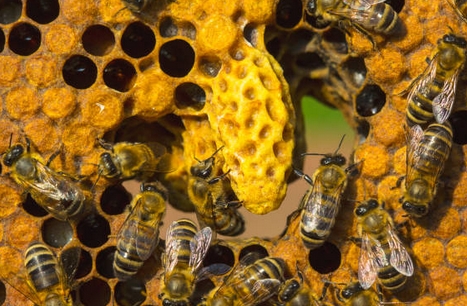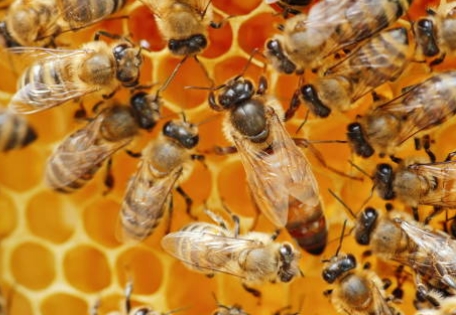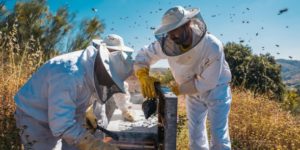In one bee community (the hive) there are from 20 to 80 thousand bees, depending on the time of year. The hive has three types of bees. In addition to the worker bees that make up the largest part of the bee colony, each hive has hundreds of drones and only one queen. The worker bees are 8-9 mm in size, while the drones and queens are much larger. The nut reaches up to 25 mm. The queen bee is one of the wonders of nature. It can also lay 2,000 eggs a day in beehives, which is many times more than its weight.
One wonderful food is produced in bee society. It’s royal jelly. Every young worker bee is feeding with royal jelly only for the first three days, and later the care bees continue to feed them only with pollen and nectar. And the queen bee has the privilege of feeding it with royal jelly her hole life.
During the year when the nature came to life, the bee colony maintains the temperature in the hive of an average of 34.5 C. When the temperature increases, it can be one of the signs that the hive is overcrowded. Then something begins to happen in the hive that has enabled bees to survive for 150 million years. There is a swarm instinct. In the swarm instinct, the worker bees begin to make queen cells that seem to hang from the honeycomb. These cocoon queen bee are a few centimetre in size.

After 10-11 days, a new queen will hatch from those queen cells. The young queen hatches from the hive and, in nice weather, mates with drones, sometimes with 20 of them. The drones die immediately after mating, and the queen returns to the hive from which she flew. Now there are two queens in the hive that will not be tolerated. Sometimes they attack each other and one suffers.
And swarming occurs more often. Then, usually, the young queen hatches from the hive and takes about 20 thousand bees with her. A swarm of bees hatches with a queen and climbs a nearby tree thirty to forty meters from the hive. They will stay there until the next day until the brooding bees find a new habitat, hollow or hole where they could settle. When the new hiding place is found, the queen takes off and the whole swarm with her.
Beekeepers remove the swarm from the branch to place them in the hives. First, they try to locate the queen. It is enough to put a queen or a part of bees with a queen in the hive that is placed under the swarm – and the bees from the swarm unmistakably enter the hive on their own. This is called a “natural swarm” in beekeeping. Beekeepers value the natural swarm very much, but only if it is not from their apiary. The essence of beekeeping is to reduce the swarms of the bee colony as much as possible.




admin
says:@bojan, thanks for your comment, but first I should be extremely good in beekeeping and only after that, to give advise to someone else.
Meanwhile, this internet site will growth together with my bee experience 🙂
Bojan
says:Thank you for these interesting facts about bees. Although I am not interested in bee keeping I find these articles very educational. I would suggest that you should elaborate a little bit more economical aspect of bee keeping, so that people that mightily want to go in to this business, can be prepared better.